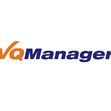Who's at the heart of your provision?
If I was to ask a range of providers who was at the centre of their provision, I’m pretty sure that many would without hesitation say the learner. Whilst this is what the majority of us believe to be an accurate response, is it actually true in our own organisations? Or would some of us concede that whilst this is the focus we strive to provide, it’s not always the case?
If we fundamentally believe that the learner experience should be at the centre of everything, why is it sometimes not the case? What gets in the way of achieving our ideal?
Speaking with our clients, who are all providers, perhaps the most common response to this question is reporting. This is the single biggest thing that prevents assessors from spending as much time focusing on their learners as they’d like. Reporting seems to fall into two subtly different categories – reporting to management and reporting for management:
Reporting to management – Whether private or public, a training provider is fundamentally a commercial entity. As such, it needs to remain solvent, balancing its incomes against expenditure and accurately predicting future cash flows. So, an awful lot of reporting exists simply to allow management to make good business decisions. How many learners are currently on programme? How many will complete in the next quarter? When do we need to carry out marketing to find our next learners? How many assessors do we need in order to deliver to them?
These, and many more, are examples of the reports that are essential if management is to be able to effectively manage the business.
Reporting for management – In addition to the business aspects of delivery, there are other reports that concern issues such as quality. Funding sources, as well as Ofsted, all have their own specific reporting requirements and it’s vital that a provider has all the required information to hand the moment it’s requested. So, an astute provider will ensure that the relevant data is continually being recorded, and that it can be easily presented to whoever may require it, in a suitable format.
Combining the requirements of reporting to, and reporting for management, creates a daily burden on the assessment team which, perhaps, represents the biggest obstacle to them focusing more on the learner experience.
This is where the electronic systems you use can really pay dividends, in allowing the quick and easy recording of data, and one-click access to the reports the data generates.
For the providers who have already solved this – and have freed up the time required to keep the learner experience paramount – the rewards are obvious. These providers report better learner satisfaction and retention rates, better achievement figures, higher assessor satisfaction ratings and better results at inspection.
When SAKS Education recently reported on their second successive Ofsted Outstanding inspection, it wasn’t surprising to observe that one of the recurring themes was a real focus on the learner and the learner experience.
So, whilst finding a convenient and easy way to ease your reporting burden isn’t the only way you can give time back to your assessment and management teams, it’s certainly a great start.
Whilst finding a convenient and easy way to ease your reporting burden isn’t the only way you can give time back to your assessment and management teams, it’s certainly a great start.


